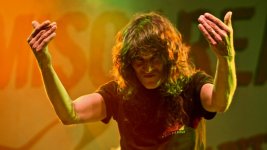Diurpaneus
Banned
- Messages
- 249
- Reaction score
- 21
- Points
- 0
- Location
- Bărăgan
- Ethnic group
- Thraco-Roman
- Y-DNA haplogroup
- Argeș(~SER+MAC)
- mtDNA haplogroup
- Walati(Vlachs)
That's a recent addition then. Sorry. I know English is not your first tongue.
Nowadays not even Romanian is my native tongue,but I
believe that I have something to say.



